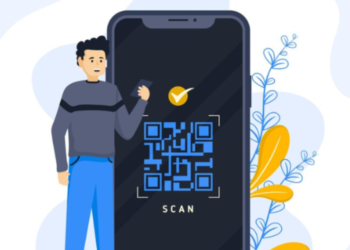The business correspondent model is a financial inclusion initiative in which banks use the services of intermediaries, such as NGOs, microfinance institutions, and civil society organisations, to provide banking services to underbanked areas and populations through a network of retail agents called Business Correspondents (BCs). BCs act as a liaison between banks and clients, facilitating the communication of information and managing correspondence between them.
Under the business correspondent model, BCs are authorised by banks to offer a limited range of banking services, such as account opening, cash deposit and withdrawal, and fund transfer, on behalf of the bank. BCs typically operate in areas where traditional banking infrastructure is inadequate or non-existent, providing banking services to the unbanked and underbanked population at low cost and promoting financial inclusion.
Let’s read more about their roles and importance below.
What are the roles and responsibilities of business correspondents?
Business correspondents have several roles and responsibilities apart from establishing financial inclusion in banking.
First, they are responsible for handling the receipt and delivery of small-value remittances and other payment instruments. Depending on the partner bank’s guidelines, it includes disbursing small loans, which may include agricultural loans, entrepreneurial loans, group loans, etc. They are also responsible for collecting payments and managing account-related activities.
Business correspondents handle small-value deposits and (cash) withdrawals, with a maximum value of Rs. 20,000 per account per day but no minimum requirement.
Second, business correspondents are accountable for providing financial services to underserved populations that traditional banks may be unable to reach. It includes people living in remote areas or villages. By providing services like opening bank accounts, small loans, money transfers, and bill payments, they help these populations access financial services that they may not have had access to otherwise.
Business correspondents are also required to maintain good customer relationships. They must provide quality customer service and be responsive to customer needs and queries. They must also maintain confidentiality and ensure that customer data and information is protected and not misused.
Apart from the abovementioned roles, business correspondents maintain records and documents related to their transactions which may include records, receipts, and vouchers. Further BCs must adhere to the guidelines and policies set by their partner banks.
Challenges facing business correspondents in expanding financial inclusion in banking
To truly achieve financial inclusion, it is essential to go beyond simply increasing access to financial services. It requires a comprehensive approach to tackle the underlying structural issues perpetuating financial exclusion. It includes addressing factors such as lack of awareness, inadequate infrastructure, limited digital literacy, and cultural barriers. Moreover, the financial system itself needs to undergo a fundamental shift. Traditional models have often neglected the needs of marginalised populations, leading to their exclusion from formal banking channels.
BCs have emerged as a powerful solution to all such issues by leveraging technology and innovative approaches to deliver financial services in a more inclusive and accessible manner. Now, BCs must look to expand their scope and reach, offering a broader range of financial products and services to cater to diverse needs. They should also focus on building trust and credibility within communities and strengthening partnerships with mainstream financial institutions and regulatory bodies.
The Grameen Foundation India (GFI) and Business Correspondent Federation of India (BCFI) jointly released a report titled ‘Reimagining the Next-generation BC (business correspondent) Model.’ The report suggests enhancing financial inclusion in India by creating a more investor-friendly environment for the business correspondents (BC) who serve as an extension of bank branches.
To read the latest updates in the industry, visit Paytm’s official website today! Click here.
Conclusion
The role of BCs in expanding financial inclusion in India cannot be overstated. They have been instrumental in bridging the gap between traditional financial institutions and underserved communities, reaching the last mile with essential financial services. However, while BCs have made significant progress, there are opportunities to be explored and challenges that still need to be addressed.







